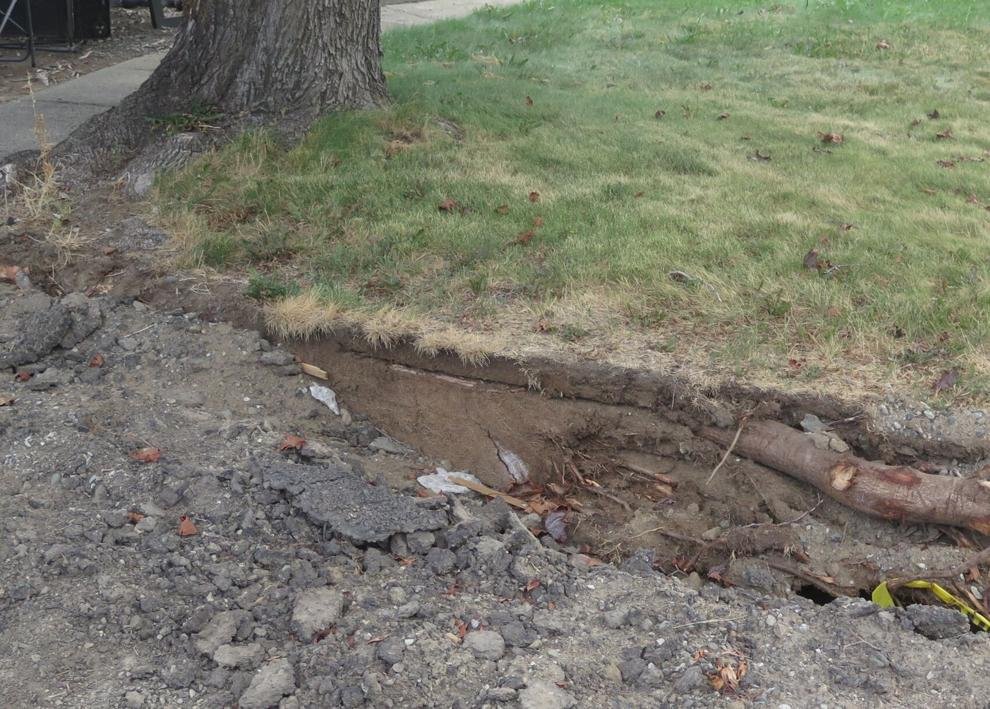Tree roots aim for survival
By Mary Fran McClure
WSU Chelan/Douglas County Master Gardener


Ask folks how far roots extend beyond an established tree, and most will likely answer roughly the same width as what is viewed in the above-ground tree canopy. To be accurate, there’s no general guidelines for how far roots extend.
Tree roots go to sensible levels — what’s needed for the plant to survive. This means there’s a wide variation on how far roots extend beyond the trunk. Soil depth, moisture availability, nutrients, type of soil, nearby roads and other barriers, soil compaction, even the type of tree — these are just a few of the many variables that factor into root growth.
Both outward reach and depth of roots depends on many factors. Roots are not a mirror of the above-ground tree crown dripline, as roots reach where they can absorb nutrients and moisture. Generally, that’s not far below ground level, often within a foot and seldom deeper than 3 feet below ground level. Hard pan layers and clay soils keep roots somewhat shallow, while sandy soil means roots may reach deeper, depending on where they can get moisture.
Big evergreen trees have such dense needle growth that rain can’t penetrate beneath their canopies. That means those roots reach well beyond that canopy in search of moisture and nutrients. We have large trees in our landscape, and I am well aware those roots reach out into the lawn and surrounding landscape, sucking up moisture and nutrients intended for my immediate plants.
A neighbor’s rapidly growing and untended trash tree with the mislabeled name Tree of Heaven (Ailanthus Altissima) is classified in Chelan County as a Class C noxious weed. Control is encouraged because it has compounds that attracts the lantern fly, which is a serious pest of grapes, apples, pears and cherries. This neighboring tree gets no summer moisture on the neighbor’s property, and I know just where its roots have invaded — into our raised beds! Those roots have found the perfect source of moisture and nutrients by heading underneath the neighbor’s fence. An interesting observation I’ve noticed is those roots seem to prefer hugging the insides of our raised beds, perhaps in hopes of stealthy concealment.
Before I transplant tomatoes and annuals in those raised beds, each spring I dig up what errant roots I can find, although I know that won’t prevent them from coming right back.
Yes, tree roots are not bound by property lines, but can be bound by roads, buildings and compacted ground. They can easily reach out up to five times beyond their above-ground canopies.
Healthy trees must contend with obstacles to remain healthy and vigorous or even to survive. Trees planted in lawns must contend with the common problem of lawn overwatering, lawnmowers or weed eaters whacking their trunks, and competition for nutrients. Digging irrigation of other trenches can damage or eliminate healthy root systems.
When preparing to plant a tree, consider these factors as well as selecting the right type and size of tree at maturity. The value of a tree depends on its size, species, condition and location. As it grows, your research in selecting a smart choice will provide you with a valuable and rewarding tree.
A WSU Chelan and Douglas County Master Gardener column appears weekly in The Wenatchee World. To learn more, visit bit.ly/MGchelandouglas or call (509) 667-6540.
